Today’s post is unfortunately going to be more of a tease than a practical layout.
I’ve been experimenting with programming micro controllers the last few days (AVRs to be specific) and I thought a good starting project would be to try operating a latching relay switching circuit with this instead of the CD4069. And hopefully the result will have a smaller dimension too.
Pretty basic stuff, I know, and I probably forgot something too, but I have breadboarded this and verified that the circuit and controller works.
I have yet to verify the actual vero layout though, but will probably do so pretty soon.
Now, I wish I could share this with you all, but even if I put up the AVR binary so you could download it there’s still the issue of having to program it onto the chip. I’m open to suggestions. If there’s any interest, let me know.
Update (01.04.2013): Works great 🙂
Update (11.10.2013): I know I promised this a long time ago, but better late than never. Here is the source code for the ATTiny85 micro controller used in this vero layout.
RelayControllerAttiny85_vero.c
Now, this is meant for DIY-use only, no profiting! I’m not going to explain how you compile this and tank the micro, that’s totally outside the scope here. If there’s enough interest I might consider prep’ing some micro’s and mailing them out at cost. We’ll see.
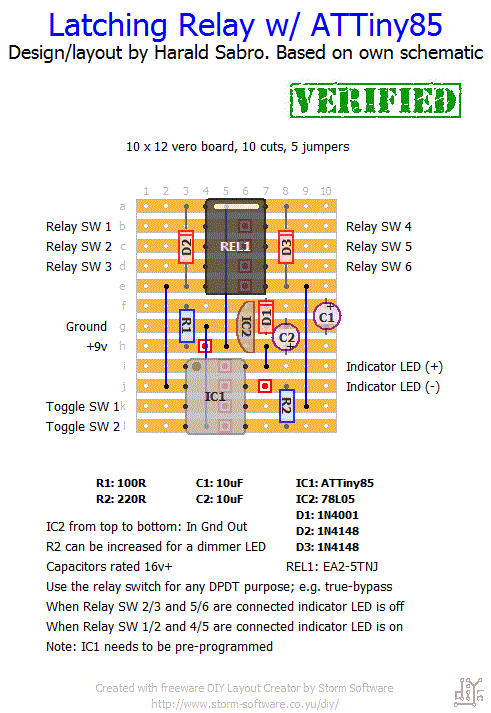
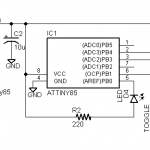
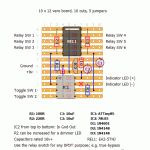
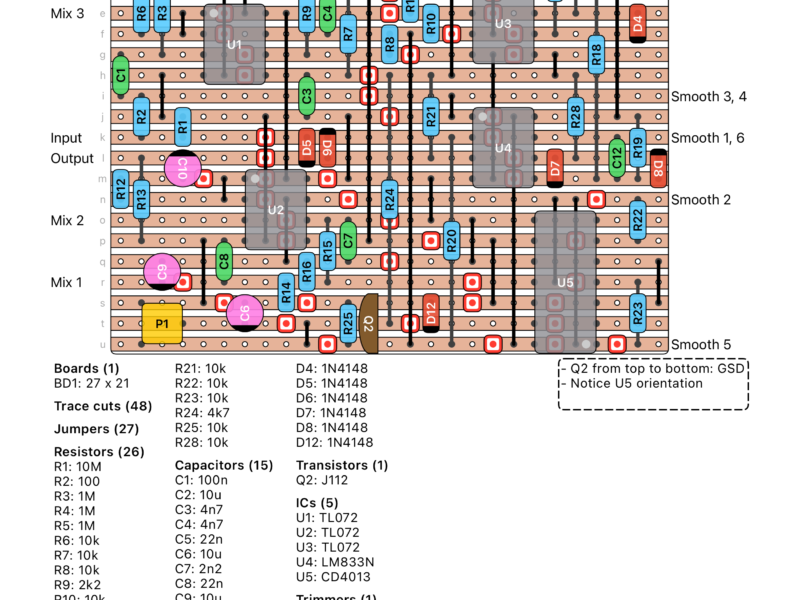
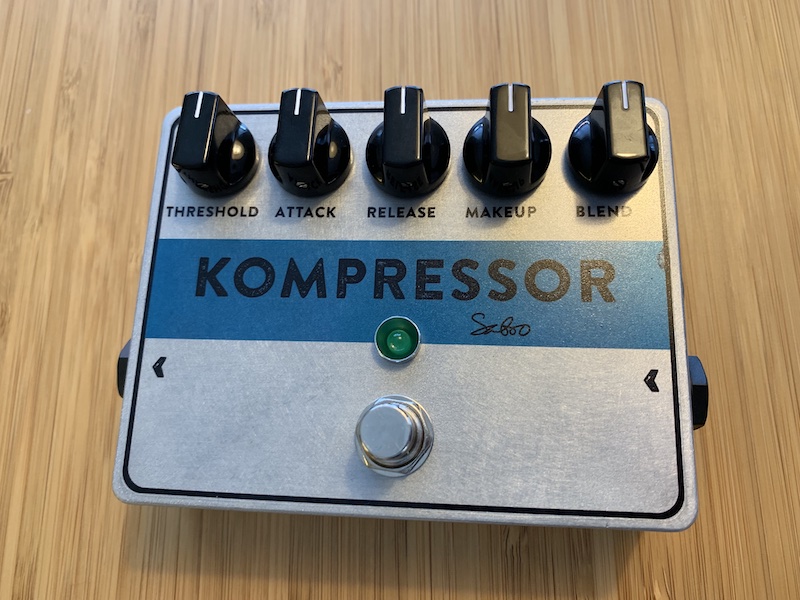
I don’t think that relay will work, but possibly if you find the double winding variant. The switch is momentary, yes.
I can use it as a relay, a Takamisawa AL5WN-K?
the switch is momentary?
Many Thanks
Nice one, Paul 🙂
hi, I did a similar project except it doesn’t use microcontrollers just 3 transistors
http://www.paulinthelab.com/2013/04/soft-latch-true-bypass-relay-switch-for.html
I’ll consider posting the source for all, but first I have to find it (and possibly make it a bit more presentable).
I would appreciate it if you could send it to me as well. Thanks for posting this!
Hi James,
It’s been a while so I have to dig it out, but I can send it to you.
Hi Harald,
I would like to take a look at the binary codes.. how do I get them from you?
Micah. I’ll be happy to hand you the AVR binary, though you’d have to do the chip tanking yourself. I use an STK-500 development board and don’t have any experience with anything else.
any chance I could get a list of what I would need t do this? would you be willing to provide AVR binary? I am VERY interested in implementing this into all of my builds from here on.
Well, i didnt yet try this myself but i think even programing in arduino should be much more easy than direkt on the atiny 🙂 The cool thing is that you can use arduino and breadboard before you switch to the attiny. I am planing on a tremulus lune version with arduino as led controller. One could even imagine an attiny and a digital pot in effects like fuzz etc…
Excellent tip, Nate.
If you have an arduino it should be easy to transfer your arduino-software to an attiny. http://www.hobbytronics.co.uk/arduino-attiny
Definitely thinking about it, but nothing I’ll do straight away.
I don’t completely agree. For some people it might be a good investment, but for a lot of people I would think not so much. And the learning curve is still pretty steep.
Pretty much the same it seems.
Don’t know a thing about this, I have some experience with 8051 though. The programming is via serial Dsub? In this case it should have one..I guess. The idea of using a microcontroller or a PLC is the easy reprogramming and to avoid wiring changes. I thing this could be a good start
Harald, since you’re already on this track, do you think you can try a vero for something like this
http://www.geofex.com/Article_Folders/ASMOP/uiprog.pdf
Or any other DIY Octa-switch type solution
Regards,
J.
Well, I suppose you could just tell people to get their own programmers, right? I mean, it’s a good investment, once you get into microcontrollers a whole new world opens up.
No suggestions per se, but is this the same idea as this AMZ project?
http://www.muzique.com/schem/bypass.htm